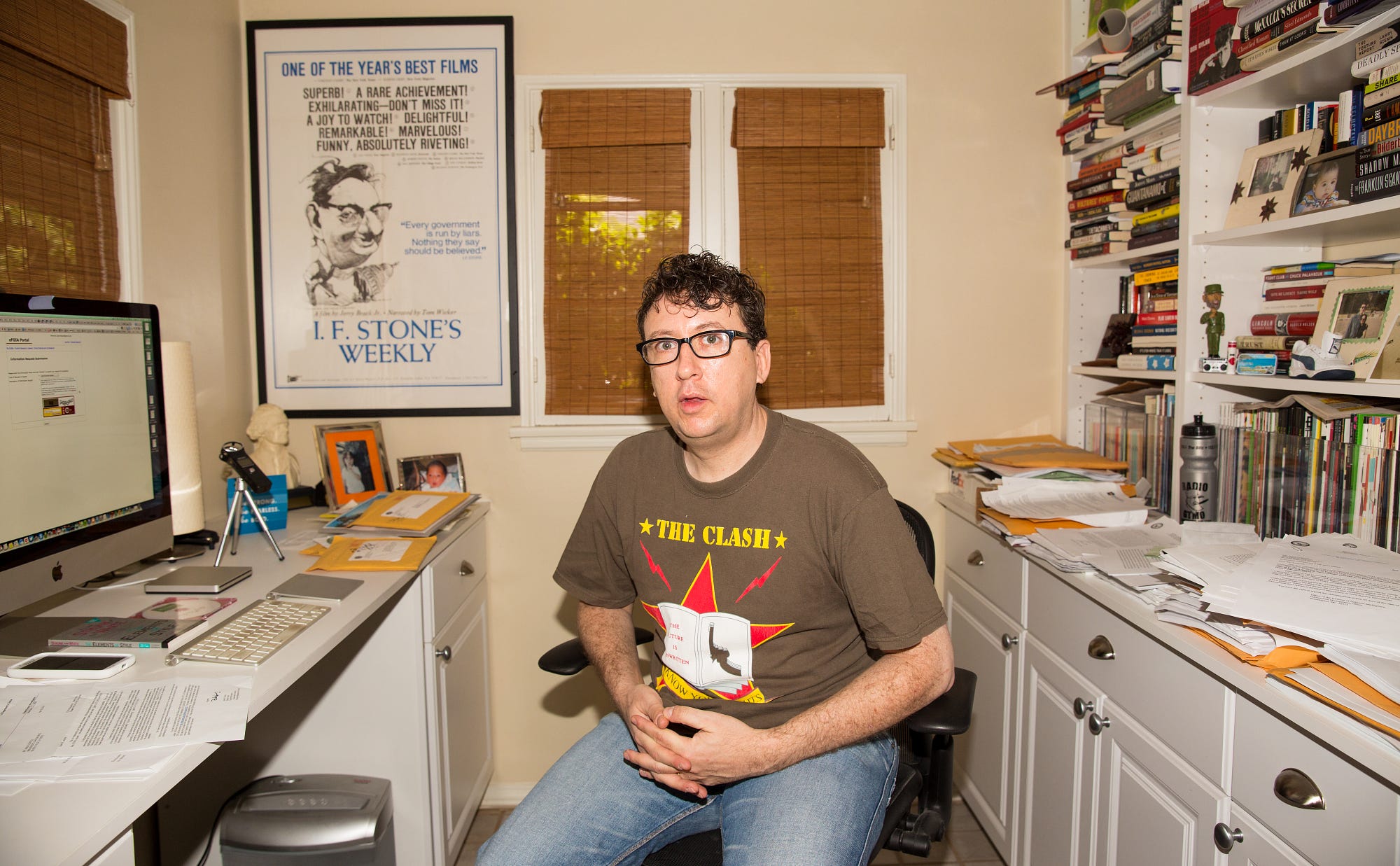“After analyzing the sanctions against our space industry, I suggest to the USA to bring their astronauts to the International Space Station using a trampoline.”
That was an April 29 tweet from Russian Deputy Prime Minister Dmitry Rogozin, who is head of Russia’s space program and who is also individually targeted by U.S. sanctions imposed due to the Ukraine unpleasantness.
He sounds irked. Possibly Russian President Vladimir Putin instructed Rogozin to be irked. Possibly Rogozin is irked that he’s individually targeted by U.S. sanctions because the U.S. didn’t have the guts to target individuals of real importance at the Kremlin, and Rogozin’s feelings are hurt.
Here is an April 3 tweet from Rogozin about Russian-made rocket engines used to launch U.S. satellites: “A Russian broom for an American witch.”
We’re Glinda, the Good Witch of the Free World. And we’re embarrassed about needing Russian flying monkeys to get us into space.
It didn’t have to be this way. United Launch Alliance, a joint venture between Lockheed Martin and Boeing, puts U.S. satellites into orbit aboard all-American Delta IV rockets. ULA presented a paper to the American Institute of Aeronautics and Astronautics detailing how quickly the Delta IV-Heavy could be “human-rated” (Washington politician-speak for “safer than sending Christa McAuliffe up in the Space Shuttle Challenger”). ULA said 4 1/2 years. The paper was published in 2009.
International diplomacy is a big bordello. “I won’t sell it!” “I won’t buy it!” Is this any way to run a whorehouse?
But leadership of the U.S. space program has been lacking. Don’t blame NASA. Every NASA official I’ve talked to, including its present chief, Maj. Gen. Charles Bolden Jr., and the head of NASA under George W. Bush, Dr. Michael Griffin, is eager to put the astro back in astronaut.
However, President Bush said we were going to Mars, and we went to Iraq instead. And U.S. lack of space capabilities took President Obama by surprise, like everything else has—opposition to Obamacare, Tea Party, NSA snooping, IRS targeting of conservative nonprofits, Crimea, VA screw-ups, ISIS fanatics pushing toward Baghdad.
And we’re a democracy. So we the people share blame for Russia finally winning the space race. (Tortoise disqualified for technical reasons, first place awarded to Sputnik hare.)
Just at a moment when we’re all making telephone calls to remote places, getting weather forecasts for July 4 weekend, looking at Google Earth to see if our neighbor’s new addition violates zoning ordinances, watching DirecTV, listening to SiriusXM radio, and unable to find our way home from our local bar without GPS, we’ve lost interest in space.
That we’re unable, for the time being, get to space personally is one thing. The more important thing is our ability to get stuff into space—stuff that keeps the CIA informed, connects and positions our defense forces, and helps us get home from the bar. Much of our ability is dependent on two rocket engines, the RD-180 and the NK-33/AJ26. These are made in Russia.
On April 11, the Space Foundation issued a “Fact Sheet: Russian Rocket Engines Used by the United States.” The Space Foundation is a non-profit international organization that has, for more than 30 years, been the foremost “advocate for all sectors of space.” Its mission is “to advance space-related endeavors to inspire, enable, and propel humanity.” Its Fact Sheet, released nearly a month after The Daily Beast’s Christopher Dickey reported on U.S. satellites using Russian rocket engines, is just the facts.
(I’m a member of SF’s board. Because, I guess, every institution needs a class clown—in which capacity I got to talk to Charles Bolden and Michael Griffin. But I do not speak here, in any way, officially or unofficially, for the Space Foundation. I don’t speak for anyone, not even, sometimes, as my wife and children have pointed out, for myself.)
The factual situation is that ULA’s workhorse Atlas V rocket (more than three dozen launches vs. Delta IV-Heavy’s seven) was built around the RD-180 engine. Atlas V missions include, per the SF Fact Sheet, “military communications, intelligence collection, missile warning, planetary exploration…earth science payloads, a few commercial satellites, and possible human spaceflights in the future.”
The NK-33 engine, designated AJ26 after modification by America’s Aerojet Rocketdyne company, is key to the design of Orbital Sciences Corporation’s Antares rocket. Fact Sheet: “The primary mission of the Antares…[is] to service the International Space Station. Orbital is pursuing future commercial satellite launches and possible military satellite launches using Antares.”
A month after the Space Foundation published the Fact Sheet, the ever-twittering Dmitry Rogozin tweeted: “Russia is ready to continue deliveries of RD-180 engines to the US only under the guarantee that they won’t be used in the interests of the Pentagon.”
Rogozin also announced that Russia will call it quits with the International Space Station in 2020. That is four years before the U.S. plans to leave.
The ISS, launched in 1998, is the most expensive thing ever built—$150 billion and counting. The U.S. has provided more than $100 billion of that. There’s no astronomic reason the ISS can’t stay in use for another 10 to 14 years or longer. But it needs to be “reboosted” from time to time to lift it back into proper low earth orbit. Otherwise the ISS becomes a 357-foot million-pound surprise for earthlings. (Don’t worry too much. While the meteor that injured 1,000 people in Chelyabinsk last year was only 55 feet wide, it was 20 times as heavy.) Currently only Russian rocket engines, fitted with the Russian ISS docking system, can reboost the Space Station.
To these Russian nose-thumbings, one finger salutes, and social media bullyings, we do have alternatives.
The Delta IV can carry a larger payload into low earth orbit than the Atlas V, 60,779 lbs. vs. 41,478 lbs. But a Delta launch is much more expensive.
Plus, the Delta IV is—strange thing to say about an enormous rocket—very fast and noisy. According to Aviation Week, “There is some concern that the acoustic environment and acceleration profiles in the Delta IV nosecone could be too violent [for some Air Force and Navy satellite payloads].” Getting payloads “dual manifested” so that they can fly on either the Atlas or the Delta “requires detailed engineering work,” says AV, meaning “is slow as hell.”
Also Made in the U.S.A. is Orbital Science Corporation’s air-launched Pegasus. But it can carry a payload of only 977 lbs. The company’s Minotaur V can carry 1,390 lbs. but has flown just once. And its Taurus XL, now designated Minotaur-C, has been trouble-plagued, with three of nine launches ending in failure and the loss of $700 million worth of items supposed to go into orbit.
The SpaceX Falcon 9v1.1, all privately funded, all domestically sourced, can carry 28,990 lbs. It’s made three cargo deliveries to the International Space Station. But the Falcon is not yet Air Force certified for military and intelligence payloads. SpaceX is suing the Air Force over the slowness of this certification, although going to the U.S. court system is not a famous way of speeding things up.
U.S. Air Force four-star Gen. William Shelton, commandeer of Air Force Space Command and a guy who knows about these matters, said during a keynote address at the Space Foundation’s May 2014 Space Symposium that he would prefer the U.S. to develop its own equivalent to the RD-180. But he noted that would cost more than $1 billion and take between five and eight years.
So we have alternatives, sort of like the veggie burger alternatives we have on the backyard grill.
We’re dependent on the RD-180, which has flown 50 times on U.S. missions with 100 percent success. And to a lesser extent, we’re dependent on the NK33/AJ26 engine, which we’ve used six times with 100 percent success.
Plus, of course, there are U.S. political as well as U.S. technological headaches. The National Defense Authorization Act of 2015, passed by the Senate Armed Services Committee and now going to the full Senate, contains an amendment from Sen. John McCain (R-AZ) forbidding purchase of Russian RD-180 engines for national security missions after fiscal year 2017. The amendment is expected to survive the House-Senate conference and be in the bill signed by the president.
As Marcia Smith of SpacePolicyOnline.com put it, “While one part of official Washington worries that Russia will follow through on a recent threat to prohibit use of RD-180 engines for U.S. national security space launches, another part is working to ensure exactly that outcome.”
International diplomacy is a big bordello. “I won’t sell it!” “I won’t buy it!” Is this any way to run a whorehouse?
What’s interesting is how we got into the red light district with Russia. It was the result of a chain of good decisions—wise, prudent, long-sighted, or, at the least, expedient choices.
When the Soviet Union fell apart, President George H.W. Bush was anxious that the USSR rocket expertise, especially the nuke-tipped ICBM kind, didn’t get sold to the highest bidder—China, Iran, North Korea, Washington, D.C., Mayor Marion Barry. President Bush and, after him, President Clinton urged U.S. aerospace executives to look for Russian rocket business partnerships that made sense.
They did make sense. The Russians had developed a very powerful, very reliable, and relatively simple liquid oxygen/kerosene engine. The U.S. had stopped most research and development on this kind of engine after the Saturn V moon rocket was retired.
The RD-171, which would become the RD-180, was a more advanced liquid fuel rocket engine than anything we had.
That was a surprise. I talked to several U.S. aerospace engineers who were involved with Russia from the beginning. “There were cats all over the factory,” said one. “I asked, ‘What’s with the cats?’ The Russians said, ‘The mice.’ I asked, ‘What’s with the mice?’ ‘They gnaw the wiring harnesses.’”
This engineer told me about the Soyuz booster engines, similar in design to the RD-180, and how, when it was time for the four boosters to be attached to the rocket, an old man would arrive carrying his own toolbox. He was the original expert on booster attachment. He was retired, but came in, unpaid, to make sure the boosters were attached right.
“The Soviet-era factories look like hell,” said another engineer. The Russian attitude is, ‘Why wash factory walls? They just get dirty again.’ But you go look at their machine tools and everything’s pristine.”
Part of the reason for the RD-180’s superiority is Russian skill with titanium. They have a lot of titanium in Russia. They’re adept at making titanium alloys. A third engineer I talked to called the alloys “unobtainium.”
We had trouble reverse engineering the alloys. “The Russians are amazing metallurgists,” said the third engineer. “But it’s an artisanal process. The Russians themselves may not know how it works.”
“Extraordinary what you can do when OSHA’s not around,” said yet another American engineer.
In 1995 Lockheed Martin conducted an open competition for the next generation Atlas rocket’s first stage engine. The RD-180 won on both performance and cost.
The idea was that the RD-180 would be co-produced, built in Russia for commercial satellite launches and built in America for U.S. government launches.
Lockheed Martin and ULA spent more than $120 million on the American part of the RD-180 co-production program. But budget constrictions trumped expansion of the U.S. industrial base. Russian-built RD-180s cost only about $10 million apiece.
With all due respect, the American aerospace industry can’t build a rider mower for $10 million. (Though it would mow your lawn at International Space Station orbital speed—17,000 mph.) Every RD-180 engine has been imported from Russia.
Given All of the Above, the Conclusion Is That We Should Go Ahead and Keep Using the Damned Russian Rocket Engines. Screw Russia.
We have a stockpile of RD-180s and AJ26s that will last two years. If the Russians don’t want their engines “used in the interests of the Pentagon,” we should employ the time-honored technique of international diplomacy and lie about it.
Will the Russians let the ISS fall out of the sky? That would move them from being the fourth least popular nation on earth—behind North Korea, Iran, and Syria—right to the top of the list.
Do we really need $1 billion and five to eight years, as Gen. Shelton says, to replace the RD-180? I asked a senior executive in a private sector space company. He said, “Only if you insist on doing the Air Force way.”
We possess all the RD-180 blueprints and specifications. We have, I’ve been told by a metallurgist, figured out the metallurgy. What’s Russia going to do? Haul us into International Patent Court in The Hague?
No nation was ever destroyed by embarrassment. And the RD-180 can assist the U.S. military in destroying all sorts of things, including Russians if necessary.
The McCain amendment to the National Defense Authorization Act contains exceptions for crisis situations—holes you could fly a Delta IV through.
And Russia, with its economy in recession and energy prices falling, needs the money and the continued production to keep its own space program going.
I’ve been told on deep background by a highly placed source (I’ve been waiting all my journalistic life to use the phrase “told on deep background by a highly placed source”) that Putin said Rogozin should put a sock in it.
And on-the-record in the foreground there is Gen. Shelton, quoted in the May 21 issue of SpaceNews, “Speaking to reporters here at the 30th Space Symposium, Shelton said that there are ‘indications’ that the [RD-180] will remain available on a ‘business as usual’ basis, though he declined to be specific.”
Russia can claim it’s taking its ball home, but Russia can’t quit playing.






















































 Schafer’s is a highlight: “In the future, we will play games while floating naked in a tank of warm, sensory-depriving gelatin. Games will be distributed chemically, into the gelatin, and absorbed into the player’s skin. The gelatin will be Lingonberry-flavored, and the games will encourage good citizenship.” He’s probably at least half kidding, but who can say for sure?
Schafer’s is a highlight: “In the future, we will play games while floating naked in a tank of warm, sensory-depriving gelatin. Games will be distributed chemically, into the gelatin, and absorbed into the player’s skin. The gelatin will be Lingonberry-flavored, and the games will encourage good citizenship.” He’s probably at least half kidding, but who can say for sure?






 Meadowcraft and other Native American points of interest in southwestern Pennsylvania. (Map: Thomas Cool/Wikimedia Commons)
Meadowcraft and other Native American points of interest in southwestern Pennsylvania. (Map: Thomas Cool/Wikimedia Commons)









































